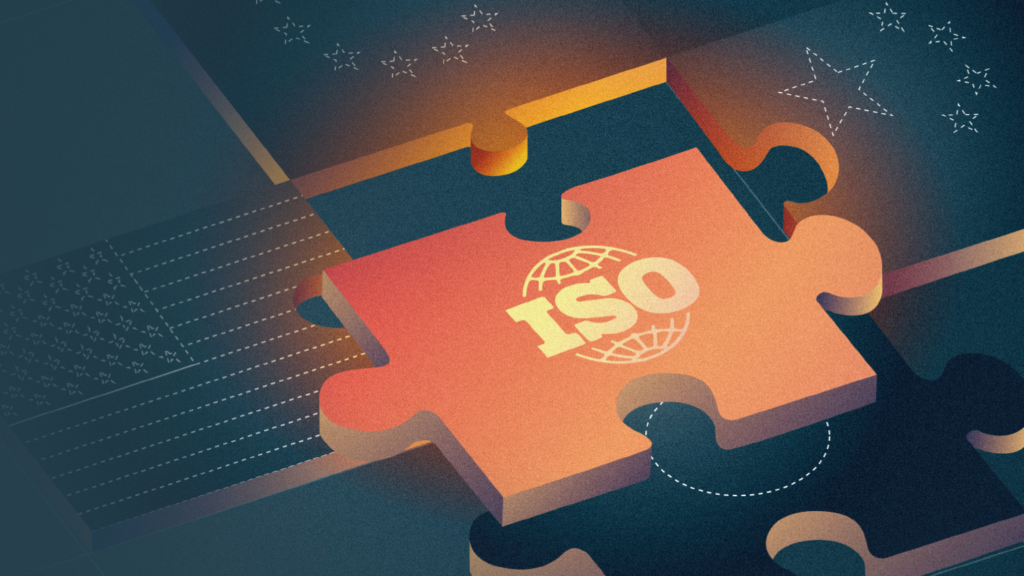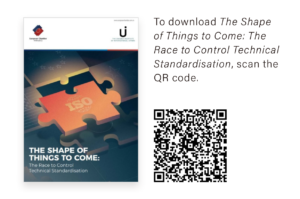
The race to control technical standardisation
Technical standard setting has emerged in recent years as one of the key battlegrounds in the struggle among states to gain dominance in high technology sectors. While the core competition is between the People’s Republic of China (PRC) and the United States (US), there are serious implications for the European Union (EU) and European enterprises as well.
China’s rapidly growing footprint in international technical standardisation is of particular significance given that its approach to standardisation is distinct from European and international practice. This is one of several factors that is leading to increased politicisation of technical standardisation, which has raised the risk of bifurcation, fragmentation and decoupling of standards internationally.
Domestically, China is undergoing standardisation reform, which has seen its system go from being state-controlled to one that is state-centric. Standards that used to be negotiated exclusively within state institutions are now developed in both state and market tiers. While this is an improvement, it means that direct and indirect mechanisms of state influence continue to exist in standard setting, with China’s industrial policy exerting a strong influence over the direction standards take.
In some respects, the reform has provided more opportunities for European firms to shape standard setting in the PRC, with a significant share already participating. This is particularly true for sectors such as civil engineering and construction, petrochemicals, and information and communication technology (ICT). However, opportunities continue to be relatively limited.
A survey of European Chamber member companies and subsequent in-depth interviews with respondents indicate that, in order to influence domestic standard setting in China, a combination of the following is required: standardisation expertise; investments in local research and development; good government contacts; a sound corporate reputation; Chinese language skills; reasonable market share and company size; early commercialisation of innovation; collaboration with influential Chinese companies in joint ventures; efficient internal coordination; a long business history in China; knowledge of the Chinese standardisation system; and openness to dialogue with Chinese actors.
While a foreign company’s ability to be involved in and shape technical standard setting in China varies across different sectors of the economy, nine distinct challenges exist:
- formal barriers to participation in domestic standards working groups;
- informal rules restricting the share of foreign-invested enterprises’ (FIEs’) voting rights;
- exclusion from information coordination;
- restricted access to technical leadership positions;
- lack of information and transparency;
- high participation fees;
- monopolistic market structures due to preferential treatment;
- hidden political agendas that impact standardisation; and
- a lack of intellectual property protection.
Internationally, China has made considerable efforts to increase its influence in standard setting in recent years. While the country is not yet dominating international standardisation, it has made significant advances. This can be quantified by six indicators: 1) China’s increased share of leadership positions in standardisation organisations; 2) its participation in international standardisation; 3) the number of contributions to standards by China / or the number of Chinese standards contributed; 4) its share of standard essential patents; 5) qualitative descriptions from international standard experts; and 6) the increasing role of technical standards in Belt and Road Initiative (BRI) projects.
China’s growing footprint in international technical standardisation is somewhat natural given its increasing economic power and gains in innovation capacity. The strategies China adopts to increase its influence are also not radically different from those of western states. Where China differs is that the systematic support of the authorities (not least material resources) has put Chinese actors in advantageous positions and helped them gain ground in international standard setting.
While the EU maintains a vital interest in China’s integration into international standard developing organisations (SDOs), China’s growing influence presents challenges to the current predominant model of technical standardisation, which is private, voluntary and self-regulatory in nature. As mentioned previously, one such challenge is the growing risk of a bifurcation of international standardisation, not least in the context of the BRI. This divergence in approaches, the increased politicisation of standard setting and the EU’s dwindling influence in standardisation present the three main challenges for Europe and beyond, and require swift and determined action from the EU and European companies.
China’s recently published standardisation strategy is indicative of the future direction the country will take in this realm. It outlines China’s ambition to engage even more in international standard setting. This includes raising the importance of participation in international SDOs and the promotion of Chinese standards abroad, as well as attracting international standard-setting consortia. The strategy also promises to further open domestic standard setting to FIEs. However, despite the market being allowed to play a stronger role, China’s state-centric approach to technical standardisation will persist for the foreseeable future.
These developments are of crucial importance to European firms. The combination of the size of the Chinese market and its increasing competitiveness not only makes it necessary for FIEs to be involved in standardisation, but also increases the impact that Chinese standardisation practices and strategies will have on business. The European Chamber’s Business Confidence Survey 2020 found that 37 per cent of respondents participate in government-led standardisation in the PRC. In the targeted survey carried out for this study, almost 87 per cent of the responding standardisation experts from European companies characterise technical standards as “very important” or “important” with regard to their company’s investment opportunities in China. The future of Chinese standard setting will therefore clearly have a significant impact on EU-China economic relations.
This joint report by the European Chamber and the Swedish Institute of International Affairs and the Swedish National China Centre summarises the basic characteristics of technical standardisation, explores the political potential of standards, explains how China’s state-centric standardisation approach deviates from the European one, outlines China’s international standardisation activities and carves out the implications for European policy and business. It ends with recommendations for the EU, the Chinese Government and European businesses.

To download The Shape of Things to Come: The Race to Control Technical Standardisation, scan the QR code.


Recent Comments